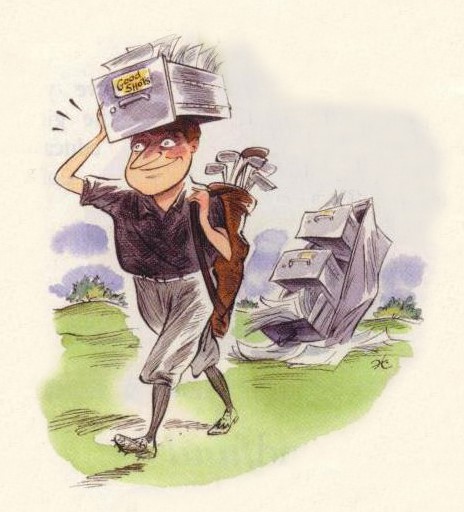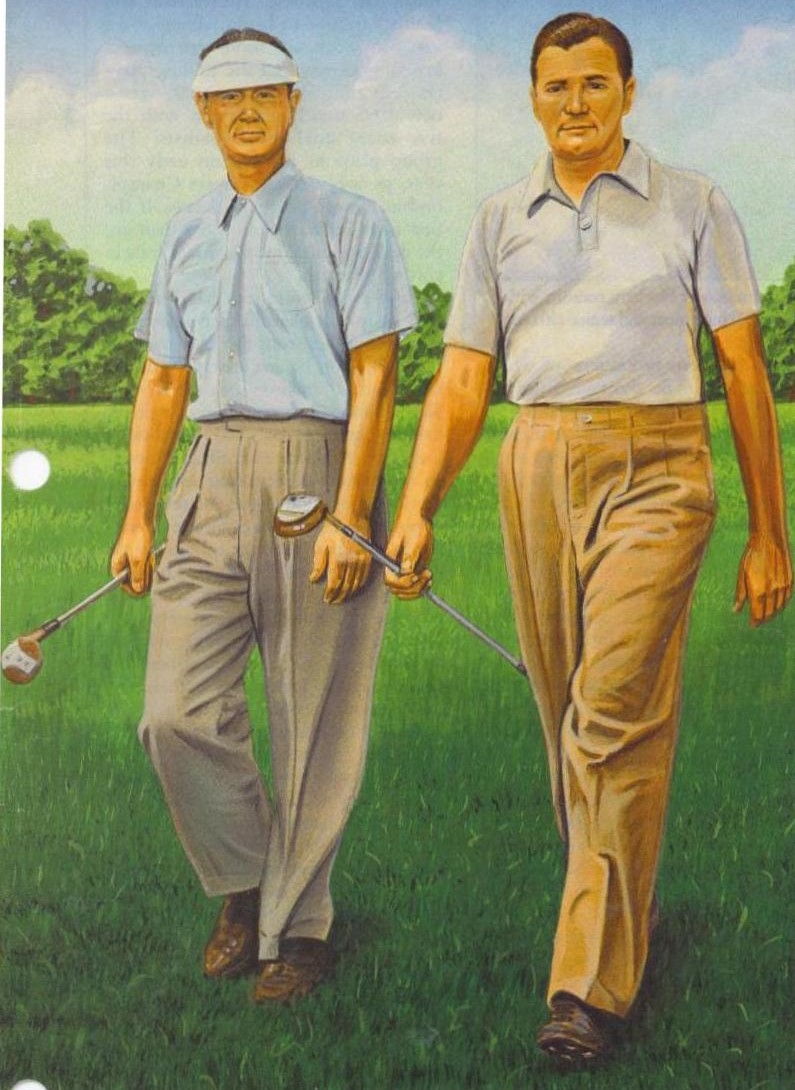
Talking in the 19th Hole
DRIVER. For newsletter 18, I was writing about the marshal’s performance on the golf course, but when I read some statements from Carlos Ortiz about his triumph at the Vivint Houston Open on the PGA Tour, I thought the marshal issue could wait.
When was Carlos asked what was the factor to handle the pressure? He replied: «the truth is that I was thinking of getting into the present, it is easy to want emotions to win you over, to start thinking about the future, but I think I did a great job. Eduardo, my caddy, helped me a lot by talking about things that don’t even have to do with golf. I tried to be thinking about everything except golf, to be able to stay in the present».
Carlos, in this and other statements, spoke of “getting into the present,” “staying in the present,” and “being in the present.”These phrases are in line with what is considered the best strategy and mentality to score: Playing one shot at a time means total immersion in the shot you are going to make. Treat each shot as if it were the most important of the round. The past is relevant only in terms of what it can teach you about your next shot, and the future does not extend beyond your intentions for the shot that lies before you.
Playing one stroke at a time means knowing that success at a previous hole does not mean much to the hole you face and that last shots or future results have little bearing on the stroke you will make. It may seem like a conservative approach, but it works. When you focus on one shot at a time, one hole at a time, or one round at a time, success is generally not far off.
One stroke at a time approach helps your mental state when playing a stroke play competition. Try to eliminate from your mind what the other players are doing, the scores of the leaders, and how the favorites are playing. It’s just you against the golf course, so play one shot at a time.
Playing one shot at a time will help you not think and wonder if certain missed shots on past holes cost you a chance to win the competition. If you keep your attention focused on the next shot, you follow your routine, and your game plan will achieve the best result.
THINKING ABOUT WINNING, SCORE, OR RESULTS
The phrase «it’s easy … to start thinking about the future» mentioned by Carlos refers to what causes thinking about winning, the score or the results. The issue of results plays havoc with players. It is manifested by an excessive concern for the score by thinking «I have to win,» continually asking one’s score and that of others, thinking about passing the cut, etc. All this increases the player’s pressure, distracts their attention by having their mind on the result, and blocks their mind limiting their performance. If we add to this the apparently positive comments from parents and pros such as «we are sure to win a champion,» «you are the best,» «in this round you can score under par,» etc. that they try to motivate, but that for many are a pressure element, a poisoned dart, one more stone in the backpack of responsibility that is already very heavy. By playing in this way, the final score rises.

The strategy in these cases is similar to other stressful situations:
– Focus on your game.
– Keep your mind in the present and play each shot separately.
– Focus your mind on the shot you are going to perform.
– Learn to wait with confidence.
– Get rid of all expectations, enjoy the game, and see the best result you can get.
– Learn to get rid of the results so that you can get to obtain them.
– You cannot force the results; do your best to make them more likely to be good.
Regarding thinking about results, experience teaches us that:
– One of the most common mental mistakes you make when under pressure is letting the result distract you and take you away from what they should be thinking.
– When you think about results, you allow confusing thoughts to creep into your mind.
– You let the result and not common sense dictate the game strategy.
– Thinking about the result tends to distort the game plan more than your swing.
– From the moment you think, «if I close with three pars, I break 80», you get ahead of yourself. Your thoughts leave the present.
– If you are playing poorly, do not think that you will lose the match or tournament.
– Players get scared or panic when they have the opportunity to break a score that they have not achieved, for example, break 80 or break par. Whatever your level of play, don’t think about the problematic holes that lie ahead; play one stroke at a time, one hole at a time.
REMEMBER MISSED SHOTS
The opposite side of the coin is looking back, remembering the missed shots. Players eventually possess a store of memories of their blows. There are players who when they stand on the ball:
– They have bad experiences from previous plays in mind.
– Memories of bad hits invade your mind.
– They remember how in that hole or another with similar characteristics they failed.
This causes them:
– Panic to hit the ball.
– Thoughts such as «don’t do the same,» «surely you repeat the mistake.»
– Tension.
– Don’t follow their routine.
– The swing doesn’t work.
You really can choose what you are going to think. Free will allows you to develop the type of memory that favors remembering good shots. You must train your mind to have a short memory for failures and a long memory for success.

Some players have crossed a stroke in a certain hole or a hole in particular. We can help them by creating positive thoughts about them. To achieve this, you have to go and play the stroke or hole with 3 or 4 balls, allowing them to achieve good strokes or a good result so that these are saved in your memory bank and used in the future.
THE DIFFERENT ACTIVATION DEMANDS IN THE ROUND
Carlos said: «Eduardo, my caddy helped me a lot in being there talking about things that don’t even have to do with golf. I tried to be thinking about everything except golf, to be able to stay in the present». Due to golf characteristics, the level of activation is different throughout the 5 hours of the round; for example, it is not the same activation when taking a tee shot as when walking towards the ball. If the player tries to maintain his optimal activation level for a tee shot throughout the round, he will end up with mental and physical fatigue. So the level of activation should fluctuate according to the characteristics of the task to be performed. This leads to the player setting the appropriate activation levels for certain shots and tasks during the round. To mention an example:
SHOT / ACTIVITY
ACTIVATION LEVEL
Tee shots
6
Shots in general
5
Putts
4
Walk to the ball / hole to hole
3
Breaks
3
Learning to trust your ability to control your activation in different situations will give you security.
Some players consider that, between the shot made and the starting gesture of your routine for the next shot. That is, when you walk from one shot to another, you do not need to think about your game that it is better to think and talk about issues not related to golf with the caddy or other players, for example:
– About hobbies and sports.
– About the family: holidays, birthdays, schools, etc.
– About places to eat.
– About movies

This way, you conserve your energy for the 18 holes. Some players call it «going on vacation.» The idea is to take time off from golf not to wear yourself out physically and mentally. Eduardo helped Carlos «to be on vacation,» which contrasts with what we see on junior tours where parents want their children to be focused for 5 hours of the round.
Carlos Ortiz’s triumph leaves us with many lessons, some of them in the mental area: motivation, selfconfidence, teamwork, being in the present, activation, etc. Players must pay greater attention to mental preparation. In our newsletters, we are looking at these topics or you can learn them in our book «The Invisible Game: Managing Your Inner Golfer». FORE.
